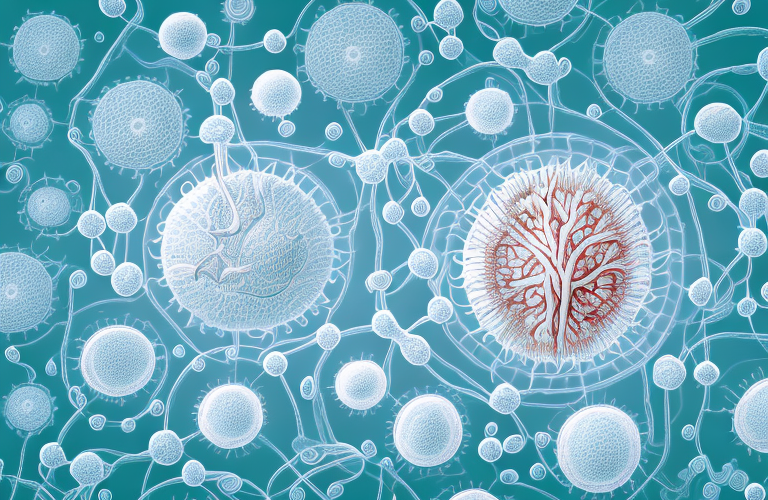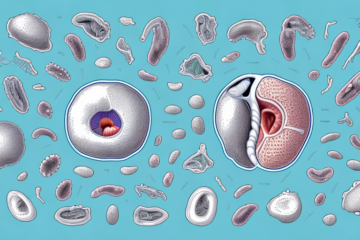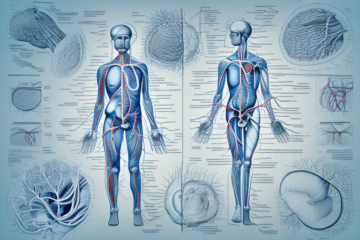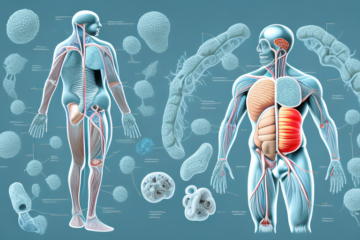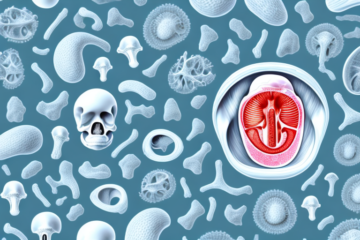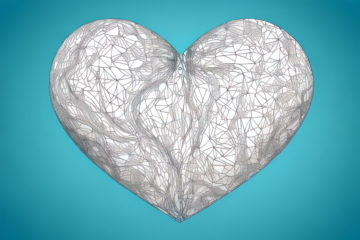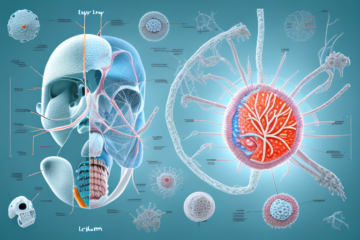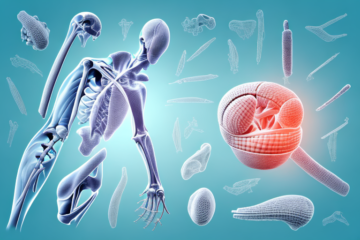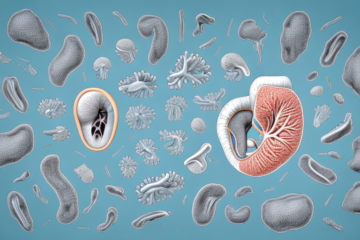The male reproductive system is complex and intricate, consisting of several organs and glands that work together to produce and deliver semen. One of these organs, the seminal vesicles, plays a vital role in the process of ejaculation and fertility. In this article, we’ll take a comprehensive look at the function and anatomy of the seminal vesicles, as well as their importance to male reproductive health.
Understanding the Male Reproductive System
The male reproductive system includes the testes, epididymis, vas deferens, prostate gland, and seminal vesicles. These organs all work together in a coordinated way to produce and deliver semen, which contains spermatozoa and other fluids that nourish and protect the sperm. The seminal vesicles are two small, sac-like structures located behind the bladder and in front of the rectum. They are about five centimeters long and produce approximately 60% of the seminal fluid that makes up semen.
The testes are the primary male reproductive organs, responsible for producing sperm and testosterone. They are located in the scrotum, a sac of skin that hangs outside the body. The epididymis is a coiled tube that sits on top of each testicle and is responsible for storing and transporting sperm from the testes to the vas deferens.
The vas deferens is a long, muscular tube that carries sperm from the epididymis to the urethra, which is the tube that carries urine and semen out of the body. The prostate gland is a small gland located just below the bladder and in front of the rectum. It produces a fluid that helps to nourish and protect the sperm as it travels through the urethra during ejaculation.
The Role of Seminal Vesicles in Ejaculation
The seminal vesicles play a crucial role in the process of ejaculation. They produce a thick, viscous fluid that makes up a significant proportion of semen. This fluid contains fructose, proteins, enzymes, and prostaglandins, all of which are essential to the fertilization process. During ejaculation, the muscles surrounding the seminal vesicles contract, causing the fluid they contain to be expelled into the vas deferens and subsequently the urethra. The semen is then expelled from the body through the penis during orgasm.
In addition to their role in ejaculation, seminal vesicles have also been found to play a role in male fertility. Studies have shown that abnormalities in seminal vesicle function can lead to decreased sperm motility and reduced fertility. This highlights the importance of maintaining healthy seminal vesicles for optimal reproductive health.
Furthermore, seminal vesicles have been found to produce a protein called SVS2, which has been shown to have anti-inflammatory properties. This suggests that seminal vesicles may play a role in modulating the immune response in the male reproductive system. Further research is needed to fully understand the implications of this discovery.
Anatomy of Seminal Vesicles: Structure and Location
The seminal vesicles are almond-shaped and about 3-5 cm long. They are located on either side of the bladder and are attached to the vas deferens. They have a unique structure, consisting of an outer layer of smooth muscle cells and an inner lining of secretory cells. The secretory cells produce the seminal fluid that makes up a significant portion of semen.
In addition to producing seminal fluid, the seminal vesicles also play a role in the transportation and storage of sperm. The smooth muscle cells in the outer layer of the vesicles contract during ejaculation, helping to propel the semen and sperm through the urethra and out of the body. The seminal vesicles also contribute to the alkalinity of semen, which helps to neutralize the acidic environment of the female reproductive tract, increasing the chances of fertilization.
What are Seminal Vesicles Made of?
The seminal vesicles are made up of several different types of cells, including smooth muscle cells and glandular cells. The glandular cells are responsible for producing the seminal fluid, which contains various substances, including fructose, citric acid, prostaglandins, and proteins. These substances are essential for sperm motility, nourishment, and protection, and play a critical role in fertilization.
In addition to producing seminal fluid, the seminal vesicles also play a role in regulating the pH of the semen. The fluid produced by the seminal vesicles is alkaline, which helps to neutralize the acidic environment of the male urethra and female reproductive tract, creating a more favorable environment for sperm survival and motility.
Furthermore, the seminal vesicles are highly sensitive to androgens, such as testosterone, which play a crucial role in the development and function of the male reproductive system. Changes in androgen levels can affect the size and function of the seminal vesicles, which can have implications for fertility and overall reproductive health.
Hormonal Regulation of Seminal Vesicle Secretions
The secretion of fluids by the seminal vesicles is regulated by both the nervous system and hormones. Testosterone, the male sex hormone, plays a critical role in regulating the function of the seminal vesicles. It stimulates the growth and development of the glandular cells, which are responsible for producing the seminal fluid. At the same time, the sympathetic nervous system, which regulates involuntary bodily functions, stimulates the smooth muscle cells surrounding the seminal vesicles, causing them to contract during ejaculation.
In addition to testosterone, other hormones such as follicle-stimulating hormone (FSH) and luteinizing hormone (LH) also play a role in regulating seminal vesicle secretions. FSH stimulates the production of sperm in the testes, which are then transported to the seminal vesicles for storage and further maturation. LH, on the other hand, stimulates the production of testosterone in the testes, which in turn regulates the function of the seminal vesicles. Together, these hormones work in a coordinated manner to ensure the proper functioning of the male reproductive system.
The Biochemistry of Seminal Fluid
Seminal fluid is a complex mixture of different substances, each with its unique functions and properties. One of the most important substances in seminal fluid is fructose, which provides the sperm with the energy they need to swim and fertilize the egg. Other essential substances in seminal fluid include citrate, which helps to buffer the acidity of the vagina, and prostaglandins, which play a role in fertility and inflammatory responses. The semen also contains a variety of enzymes and proteins that protect the sperm and help to break down the cervical mucus that surrounds the cervix.
In addition to the substances mentioned above, seminal fluid also contains zinc, which is essential for sperm development and function. Zinc is also important for maintaining the structural integrity of the sperm cell membrane. Another important component of seminal fluid is spermine, which is a polyamine that helps to stabilize the DNA in the sperm and protect it from damage.
Research has also shown that seminal fluid contains small amounts of neurotransmitters, such as dopamine and oxytocin, which may play a role in sexual behavior and bonding. Additionally, recent studies have suggested that seminal fluid may have immunomodulatory properties, meaning it can help to regulate the immune response in the female reproductive tract and potentially improve fertility.
Importance of Seminal Vesicles in Fertility
The seminal vesicles play a crucial role in male fertility. Without their secretions, the sperm would not be able to survive or function correctly. The fluids produced by the seminal vesicles provide the sperm with an environment that is conducive to fertilization and help to maintain the pH of the ejaculate, which is necessary for the survival of the sperm. Men who have problems with their seminal vesicles or who have had them removed may experience infertility or reduced fertility.
In addition to their role in male fertility, the seminal vesicles also contribute to the sensation of orgasm. The contractions of the seminal vesicles during ejaculation help to propel the semen out of the body and can enhance the intensity of the orgasm. However, it is important to note that the removal of the seminal vesicles does not necessarily affect the ability to experience orgasm, as other structures in the male reproductive system also contribute to this sensation.
Disorders of the Seminal Vesicles: Causes and Symptoms
Like any other organ or gland, the seminal vesicles can develop problems that affect their function and health. Some of the most common disorders of the seminal vesicles include inflammation, infections, cysts, and tumors. These conditions can cause symptoms such as pain, discomfort, swelling, and changes in ejaculate volume or quality. In some cases, surgery may be required to remove or repair the affected seminal vesicle.
It is important to note that disorders of the seminal vesicles can also have an impact on fertility. Inflammation or infection of the seminal vesicles can lead to the production of semen with reduced sperm count or motility, making it more difficult for couples to conceive. Additionally, tumors or cysts in the seminal vesicles can obstruct the ejaculatory ducts, preventing the release of semen during ejaculation. Therefore, it is crucial for individuals experiencing any symptoms related to their seminal vesicles to seek medical attention promptly to prevent any potential complications.
Treatment Options for Seminal Vesicle Problems
The treatment of seminal vesicle disorders depends on the underlying cause and severity of the problem. Some conditions, such as infections, can be treated with antibiotics or other medications. In other cases, surgery may be necessary to remove or repair the affected seminal vesicle. It’s essential to seek medical attention if you experience any symptoms related to your seminal vesicles, as early diagnosis and treatment can often lead to better outcomes.
In addition to medical treatment, lifestyle changes can also help manage seminal vesicle problems. Maintaining a healthy diet and exercise routine can improve overall prostate health and reduce the risk of developing seminal vesicle disorders. Avoiding activities that put pressure on the prostate, such as prolonged sitting or cycling, can also help prevent problems with the seminal vesicles. It’s important to discuss any concerns or questions about your prostate and seminal vesicles with your healthcare provider.
The Link between Prostate Health and Seminal Vesicle Function
The prostate gland and seminal vesicles are closely connected in terms of their function and health. Conditions that affect the prostate gland, such as prostate cancer or prostatitis, can also affect the seminal vesicles and vice versa. It’s crucial to maintain good prostate health and to seek medical attention promptly if you experience any symptoms related to your prostate or seminal vesicles.
One of the key functions of the seminal vesicles is to produce and store seminal fluid, which is an essential component of semen. This fluid contains nutrients and enzymes that help to nourish and protect sperm as they travel through the male reproductive system. Any disruption to the function of the seminal vesicles can therefore have a significant impact on male fertility.
In addition to their role in reproduction, the prostate gland and seminal vesicles also play a role in urinary function. The prostate gland surrounds the urethra, which is the tube that carries urine from the bladder out of the body. The seminal vesicles are located behind the bladder and also contribute to the production of semen. Problems with either of these organs can therefore lead to urinary symptoms such as difficulty urinating or frequent urination.
Preventing Seminal Vesicle Issues: Lifestyle Changes and Dietary Recommendations
While some seminal vesicle disorders may be unavoidable, there are several things you can do to reduce your risk of developing problems with your seminal vesicles. Maintaining a healthy diet and lifestyle, exercising regularly, and avoiding risky behaviors such as unprotected sex or drug use can go a long way in protecting your reproductive health.
In addition to these lifestyle changes, there are certain dietary recommendations that can also help prevent seminal vesicle issues. Consuming foods that are rich in antioxidants, such as berries, leafy greens, and nuts, can help reduce inflammation in the body and protect against oxidative stress. It is also important to stay hydrated and limit your intake of processed and high-fat foods, which can contribute to inflammation and other health issues.
Future Research on Seminal Vesicles: Potential New Discoveries
Research on the male reproductive system, including the seminal vesicles, is ongoing. Scientists are continually discovering new information about the function and anatomy of these organs and developing new treatments for related disorders. As our knowledge of the male reproductive system grows, we may soon gain new insights into the causes of infertility and other problems related to the seminal vesicles.
In conclusion, the seminal vesicles are a critical component of the male reproductive system, playing a vital role in the process of ejaculation and fertility. Understanding their function and anatomy can help men and their healthcare providers to identify and manage problems related to these organs, enhancing overall reproductive health and improving outcomes.
One area of future research on seminal vesicles is the potential link between their function and prostate cancer. Recent studies have suggested that there may be a connection between the two, and further research could help to clarify this relationship and lead to new treatments for prostate cancer.
Another area of interest for researchers is the role of seminal vesicles in sexual function and pleasure. While the primary function of these organs is related to reproduction, they may also play a role in sexual pleasure and satisfaction. Further research in this area could lead to new insights into sexual health and wellness.

